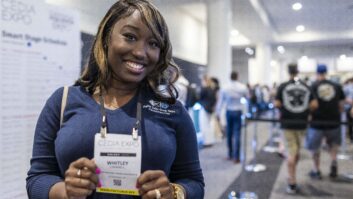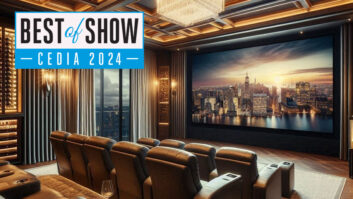During yesterday’s “8K Technology and Its Impact on the Custom Integration Channel” panel, four industry experts sat down to discuss a broad range of topics that affect 8K video’s adoption in modern households. Hosted by Marc Finer, managing director of Communication Research, the panel featured Mark Major of Hisense USA, Bill Mandel of Samsung Research America, Jim Kozicki of ProSource, and Walt Zerbe of CEDIA. The panelists represented diverse areas of the industry, providing unique perspectives on 8K and how to bring its benefits to a wider audience.

Finer opened up the discussion by asking how the industry-wide move toward greater immersion in AV is impacting product development. “This year, we’re continuing focus more on the large screen format, because that’s going to lend itself to 8K — and that’s going to be far more immersive,” Major said, speaking of Hisense’s continued commitment to larger display sizes. “For us, bigger is always better…not only for a direct-view product, but our laser TV products also provide a tremendously immersive experience for the consumer.”
The push for larger screens resonated among all panelists, with Mandel noting that the advancement in upscaling technology is playing a huge role in supporting 8K in larger displays. He touched on the growing back catalog that channels have access to, and how emerging upscaling technology can enhance the picture quality of older content up to current standards, while still preserving creative intent. “We’re working in terms of remastering imagery, being able to develop AI-based algorithms that can take a substandard image and improve it,” he said.
Finer turned the discussion toward strategies in selling the immersion 8K provides to consumers, prompting Kozicki to bring up the need for a marketplace where immersive experiences can be showcased. “What we wanted to do for our brands is set up an experience center where our members and vendors could come together in a whole new way,” he explained. “Instead of coming just to see what’s new, actually having an experiential place where they can do deep-dive training and talk about new product introductions.”
Beyond training and education, Zerbe asserted the need for 8K to be supported by content creators in order for consumers to see that the value the technology provides is worth their time and money. “I think it has to be done through content. We need assistance from the manufacturers, and we need assistance from the content creators,” he said.
The panelists agreed that a multi-pronged approach must be utilized for 8K to have a greater adoption rate among custom integrators. Consumers don’t know what they don’t know, and the first step to getting a buyer interested in 8K is to allow them to experience it for themselves. To that end, a greater effort must be made educate the masses on the benefits of 8K, such as the lack of visible pixels in larger sized screens. Plus, not only should content creators showcase the growing influx of native 8K content, but they should show firsthand how emerging AI and upscaling technology can make yesterday’s media shine on a modern 8K television.







